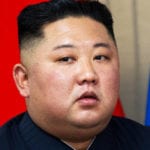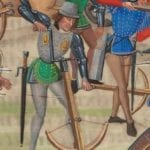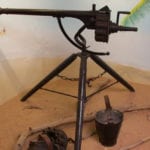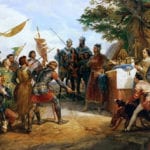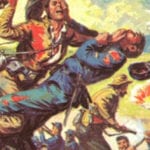 Creepy
Creepy  Creepy
Creepy  Technology
Technology 10 Scientific Breakthroughs of 2025 That’ll Change Everything
 Our World
Our World 10 Ways Icelandic Culture Makes Other Countries Look Boring
 Misconceptions
Misconceptions 10 Common Misconceptions About the Victorian Era
 Mysteries
Mysteries 10 Strange Unexplained Mysteries of 2025
 Miscellaneous
Miscellaneous 10 of History’s Most Bell-Ringing Finishing Moves
 History
History 10 Great Escapes That Ended Right Back in Captivity
 Weird Stuff
Weird Stuff 10 Fascinating Things You Might Not Know About Spiders
 Food
Food 10 Everyday Foods You Didn’t Know Were Invented by the U.S. Military
 History
History 10 Odd Things Colonial Americans Kept at Home
 Creepy
Creepy 10 More Representations of Death from Myth, Legend, and Folktale
 Technology
Technology 10 Scientific Breakthroughs of 2025 That’ll Change Everything
 Our World
Our World 10 Ways Icelandic Culture Makes Other Countries Look Boring
Who's Behind Listverse?

Jamie Frater
Head Editor
Jamie founded Listverse due to an insatiable desire to share fascinating, obscure, and bizarre facts. He has been a guest speaker on numerous national radio and television stations and is a five time published author.
More About Us Misconceptions
Misconceptions 10 Common Misconceptions About the Victorian Era
 Mysteries
Mysteries 10 Strange Unexplained Mysteries of 2025
 Miscellaneous
Miscellaneous 10 of History’s Most Bell-Ringing Finishing Moves
 History
History 10 Great Escapes That Ended Right Back in Captivity
 Weird Stuff
Weird Stuff 10 Fascinating Things You Might Not Know About Spiders
 Food
Food 10 Everyday Foods You Didn’t Know Were Invented by the U.S. Military
 History
History 10 Odd Things Colonial Americans Kept at Home
Top 10 Teenage Military Leaders
As a boy, I remember lying on the floor playing with my plastic army men, leading them to victory after victory. My younger self always wanted to be a military hero, and I think most children have a similar desire. While my need for military conquest naturally faded as I grew older and more mature, there are examples throughout history where the very young were able to turn that desire into reality. This list looks at 10 figures in history who began leading armies before their 20th birthday.
10Michael Asen II of Bulgaria
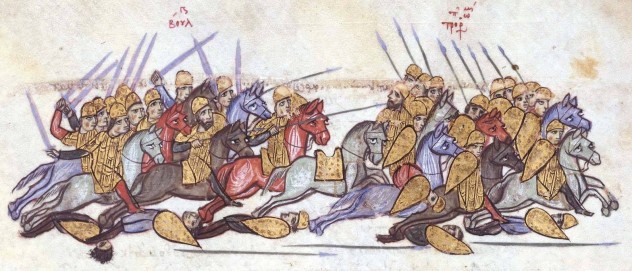
While many of these leaders were successful, Michael Asen II is one who was too young and inexperienced to have any success. He came to the throne at only seven years of age following the death of his father, Constantine Tikh, in battle. Being so young, the majority of the ruling was done by his mother, Maria Kantakouzene, who was the daughter of the Byzantine emperor, Michael VIII. At this time, the throne was fighting rebels all vying for a claim to the throne. Being the king, Michael Asen II took his father’s place at the head of the military and, though he did very little actual leading, was on the battlefield on several occasions in full battle armament made especially for the young boy.
In 1279, when he was only nine years old, the Byzantine emperor decided to place a more suitable leader on the throne. The Byzantine army easily took the capital, and Michael Asen II and his mother were sent into exile. Although he would attempt to return to Bulgaria with an army later in life, he would be unable to assert himself as the true king and his attempted takeover eventually failed. The date of his death is unknown.
9Gregorio del Pilar
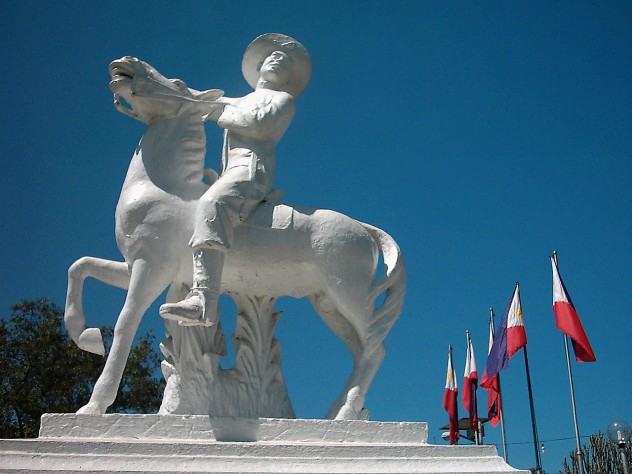
This one is a bit of a stretch, since he did not technically lead until his early 20s, but his career and fame would make it a shame to leave him off this list. Since he lived much later than most entries on this list, it was much more difficult for young soldiers to find themselves in positions of military leadership. Gregorio was born in 1875, the fifth of six children. His military career began immediately following college at the age of 20 with the start of the Philippine Revolution. Joining the revolutionaries against the Spanish, his actions and bravery in battle brought him to the rank of lieutenant only a few months after joining the service.
A year later, now a captain at the age of only 21, he proposed an attack on a Spanish garrison at Paombong that was an overwhelming victory, leading to his promotion to Lieutenant Colonel. He was exiled to Hong Kong following a truce agreement between the rebels and Spanish the same year. Only two years later, with the Spanish forces weakened due to the Spanish-American War, Gregorio and others would return to the Philippians to finish what they had begun. In June of 1898, he accepted the surrender of the Spanish in the town of Bulacan and was promoted to general at only 23 years old. This earned him the nickname “boy general” and he was widely respected by his men. He later found success fighting the Americans in the Philippine-American War until he died fighting at the age of 24. He is considered a hero in the Philippines, with several statues and monuments dedicated to him.
8Okita Soji
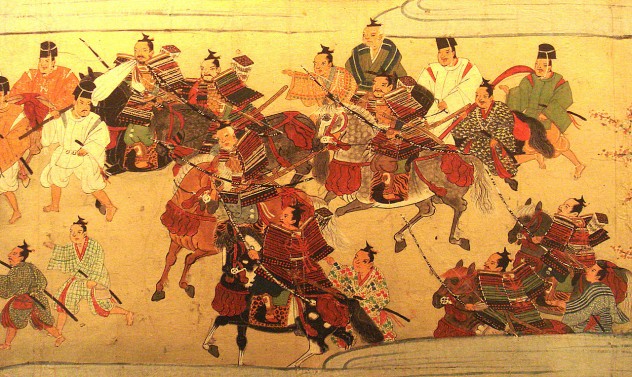
While not a military leader in the strictest sense of the word, he was a leading member of a special police force during the late shogunate period in Japan. Okita was a samurai who began training in swordsmanship around the age of nine. When he was only 12, he was defeating kenjutsu (swordsmanship) teachers in rival schools and attained the Menkyo Kaiden scroll labeling him as a master of his style at age 18. He was the head teacher at a dojo for the next year before becoming a founding member of the Shinsengumi, becoming their first unit captain at the age of 19.
While noted for his kindness off the battlefield, he was ruthless on it. During the famous Ikedaya Affair, he held a group of rebels on the second floor of a Kyoto hotel by himself. Eventually, the Shinsengumi would become more involved with the shogunate military, and Okita would assist in several battles. Like many other non-royal leaders on this list, he would die very young, although not in battle. He fell seriously ill in 1867 and died (probably of tuberculosis) in July of 1868 at the approximate age of 24. He is considered one of only 13 Kensei, or “sword saints”, and is one of the greatest swordsmen in the history of Japan.
7Henry IV of France
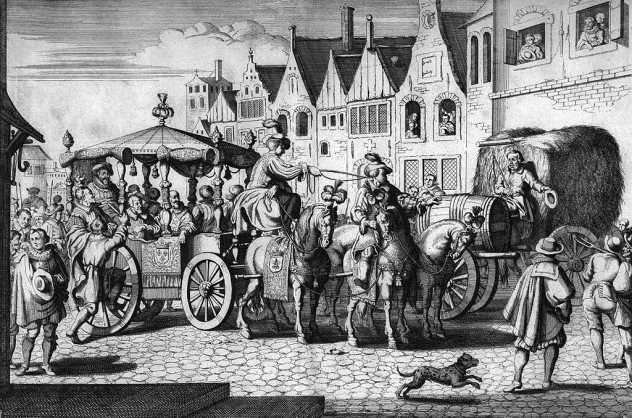
Henry IV was the first monarch of the Bourbon branch of the Capetian dynasty of France. He baptized Catholic but would convert to Protestantism in the bloody French Wars of Religion. As a teenager, Henry joined and lead the Huguenot forces during this time period. He was known as a striking and brave leader for such a young age, and led several charges into battle himself. At the age of 19, he was nearly killed in the St. Bartholomew’s Day Massacre, but was only spared when he promised to convert to Catholicism.
He was held captive by the Catholic forces for the next 4 years, before escaping in 1576 and rejoining the Protestant forces. In 1587, at the age of 24, he defeated a royalist army at the Battle of Coutras, which would lead to his ultimate rise to the throne. He was crowned king of France in 1589 and was adored by the people, known as a man of kindness, compassion, and good humor, but was assassinated by a Catholic fanatic in 1610.
6Wladyslaw III of Poland
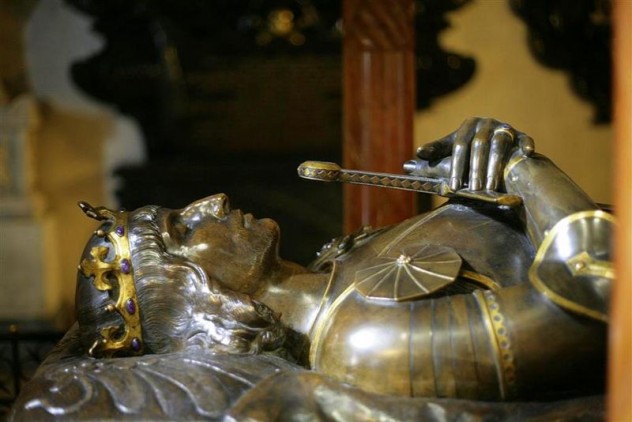
Wladyslaw is another king who succeeded to the throne at a very young age, being only 10 years old. With such a young king in power, many others saw an opportunity to take the throne for themselves, and thus his early reign was more of an internal struggle between the royal family and nobles. At the age of 17, when the kingship in the neighboring Kingdom of Hungary was being debated, Waldyslaw led armies with several other nations under the blessing of Pope Eugene IV against Hungary’s regent Elizabeth of Luxembourg. Following her defeat, he accepted the crown of the Kingdom of Hungary at the age of 19.
The threat of the Ottoman Empire was growing around this time and, with promised backing of Venetian and papal fleets, Waldyslaw turned his recently victorious forces to a holy war against the Turks. However he was betrayed by the Venetian fleets, which helped sail the Turkish forces from Asia to Europe. His army of 20,000 crusaders was caught by surprise when they met an army of 60,000 Turks in the Battle of Varna. Believing the only way for victory was to attack the very person of the sultan Murad II, he personally led the charge of his best cavalry into the heart of the battlefield. While his enemies noted his bravery, it would not be enough to win him the day.
He was overcome by the sultan’s janissaries and killed, his head cut off and raised on a pike for the rest of his army to see, causing them to flee the battlefield. Neither his body nor armor was ever recovered.
5Augustus (Octavian) Caesar
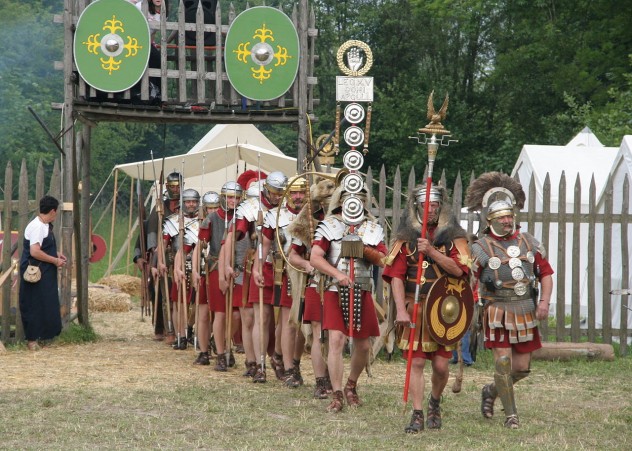
Augustus was born in 63 B.C. as the son of Gaius Octavius. In his early teens, he was sent to Apollonia, a city in modern-day Albania. He was only 18 years old when news of Julius Caesar’s assassination reached him. Ignoring counsel to seek refuge with troops in Macedonia, he returned to Italia and learned Caesar had left him two-thirds of his estate and, having no living legitimate children, had named him both his son and heir. Set on following in his adopted father’s footsteps, he began to gather support of those loyal to Caesar by emphasizing his status as the rightful heir to Caesar.
On May 6, 44 B.C., 18-year-old Augustus led an army of more than 3,000 veteran troops into Rome, meeting with little resistance since many were sympathetic to his cause. He succeeded in driving Caesar’s assassins, who were under a truce with the current consul Mark Antony, out of the city. With the Senate opinion of Antony shifting from friend to foe, Augustus began to build his military forces, even winning over two of Antony’s legions with the promise of higher wages. After Antony fled Rome, Augustus was inducted to the Senate at the tender age of 19 and granted imperium, which made his command of his army legal. They sent him along with two other consuls to defeat Mark Antony, and they did so at the battles of Forum Gallorum and Mutina, forcing Antony to retreat, although the two consuls were killed in the process.
This left 19-year-old Octavious in sole command of what remained of eight Roman legions. However, he was recalled to Rome, and his remaining troops were given to another commander. He would see more successful military exploits later in life, and eventually become the first emperor of the Roman Empire. He died in 14 A.D. at the age of 75.
4Scipio Africanus
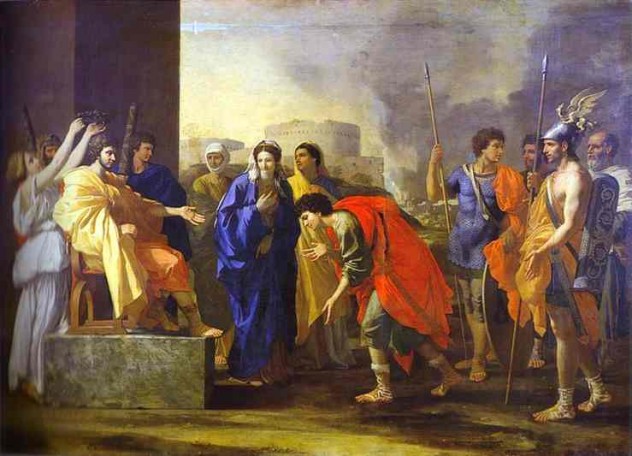
Scipio was a general during the Second Punic War and is most famous for being the commander of the Roman forces that defeated Hannibal at the Battle of Zama, though he was in his mid-30s at the time.
His father, Publius Cornelius Scipio, was also a Roman general. While exactly when he began training for military service is unknown, he was believed to be present on battlefields with his father at around 16 years of age. He became on of his father’s commanders by age 18, leading soldiers through several campaigns and gained a certain amount of fame at the Battle of Ticinus in 218 B.C., when he led a suicidal charge against enemy forces that had completely surrounded his father. The Greek historian Polybius noted his exceptional bravery and reckless daring in battle at such a young age.
Even so, his father’s army never had much luck on the battlefield and saw several disastrous defeats. These early losses would play a grand role in his development as a leader. Once he was promoted to general and given an army of his own at the age of 25, he would never again know the sting of defeat. Following his defeat of Hannibal, the Roman people wanted him to become their dictator, though he wanted no part in Roman politics and refused the offer. He continued to lead victorious armies until his retirement in 187 B.C. He died four years later at the age of 53 and is still widely considered to be one of the greatest generals in world history.
3Muhammad bin Qasim
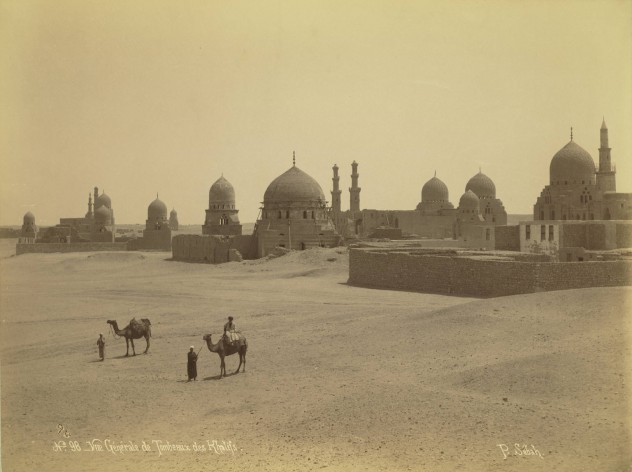
Muhammad bin Qasim was a general who fought for the Umayyad Caliphate, the second of the four major Islamic caliphates following the death of the Prophet Muhammad. He was a member of the Thaqeef tribe, learning the art of leadership and warfare from his uncle, who was the Umayyad governor at the time. After proving himself on the battlefield at a very young age, he was given command of an army at the age of only 17.
It was with this army that he began his conquest of the Singh and Punjab regions along the Indus River in modern-day Pakistan. His campaign was the third such attempt to conquer the region, the first two having been colossal failures. Where others had failed however, Qasim had remarkable success. He rode with his army, taking city after city. Word of his victories earned him many allies, and his army of 6,000 quickly swelled to around 25,000. He was noted as a ruthless military leader, even at such a young age. His military strategy was outlined by his own word as being one that would “kill anyone belonging to the combatants while imprisoning their remaining family, but showing mercy to those who yielded and refused to fight, granting them safety.”
His success is widely contributed to the discipline of his troops and his usage of superior military equipment such as siege engines and the Mongolian bow. Following his conquest, he set up a successful administration in the region. Qasim’s policies met with little resistance from locals as they allowed the observance of local religious customs in exchange for acceptance of Muslim rule. He was preparing his army for another conquest when there was a change in Umayyad leadership. The new leader recalled the generals and appointed a new governor who held a grudge against Qasim and had him arrested. There are several accounts of how he died: one says he was wrapped and stitched in oxen hides and carried through the desert, where he suffocated, while another states he was tortured to death. Historians agree he was no older than 20 at the time.
2St. Joan of Arc
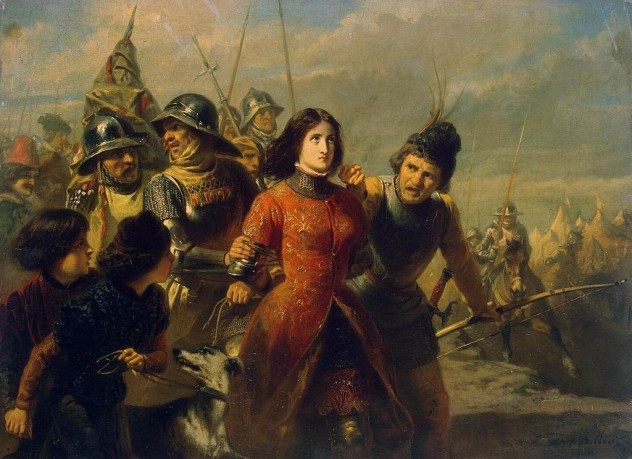
While lacking some of the military prowess that other entries on this list have, Joan has to be so high on this list because she was a teenage girl leading armies in a time when females simply did not fight on the battlefield. Joan was born in the small French village of Domremy in 1412. The house she was born in still stands and is now a museum. When she was 12 years old, she claimed to have a vision of saints Michael, Catherine, and Margaret who told her to drive the English out of France.
At 16, she gained the audience of the royal French court and made a remarkable prediction about a military reversal that would occur near Orleans. Impressed, King Charles VII granted her request to travel with the army and dress as a knight. In order to test the validity of her claim that her mission was of a divine nature, she was sent to attempt to raise the siege at the city of Orleans. She arrived in April 1429 at the age of 17. Historians continue to debate whether or not she actually led armies or was simply a presence there to raise troop morale, but she was no stranger to the battlefield and was noted as showing no fear. On May 7, she ignored a decision to wait for reinforcement and lead a charge against the main English stronghold called Les Tourelles. Though wounded in the neck by an arrow, she returned to lead the final charge herself and was regarded as the heroine of the battle.
With the victory, Joan was seen as a hero. She petitioned for and received co-command of the French army and began attacking and recapturing several small French towns and key bridges. She was present at the battle of Patay, in which the English suffered a humiliating defeat. She also played a key role in the French assault on Paris, where she continued to lead troops despite a crossbow bolt to the leg. She aided in the capture of several other cities over the next year, while seeing her fair share of losses as well. Now 18 years old, she traveled to Compiegne in May of 1430 to help defend the city against a combined English and Burgundian siege. Outnumbered during a skirmish, she ordered a retreat and assumed the place of honor as the last to leave the battlefield. However, she was surrounded and captured by the Burgundians.
She attempted escape several times, but was eventually sold to the English, who accused and convicted her of heresy. Sentenced to be burned at the stake at only 19, eyewitnesses reported she showed no fear at her execution. The executioner, Geoffroy Therage, stated that he “greatly feared to be damned.” On May 16, 1920 she was canonized as a saint in the Catholic Church by Pope Benedict XV, and has since become one of the most popular saints.
1Alexander the Great
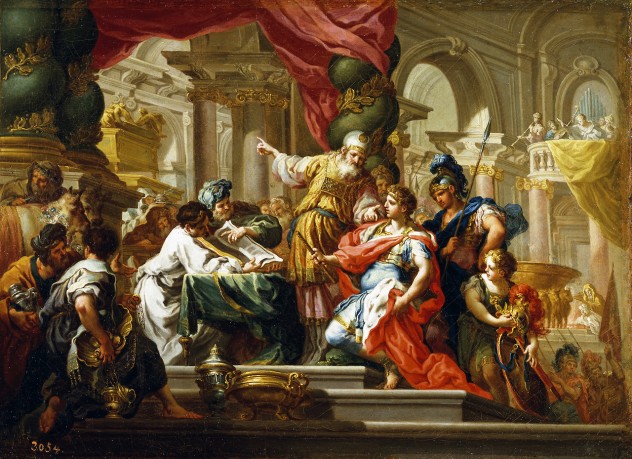
This entry should come as a surprise to no one. Alexander was born in 356 B.C. as the son of the Macedonian king, Philip II. When he was 13 years old, he was sent to Mieza to be tutored by Aristotle, with classmates such as Ptolemy, Hephaistion, and Cassander. When he was 16, he returned to Macedon to rule as regent while his father waged war against Byzantium.
It was during this time that Alexander saw his first military action by leading a small force against the Thracian Maedi, who saw the opportunity to revolt. The Maedi greatly underestimated the prince and were driven from their territory. This would be the first of many victories for Alexander. When he was 17, his father placed his son at the head of a small army, sending him to suppress revolts in southern Thrace, which he did with relative ease. Philip’s army joined his the following year and together they took the city of Elatea.
Next came the allied cities of Athens and Thebes, who met Philip and Alexander in the Battle of Chaeronea where the Macedonians used a faked retreat to win the day. With this victory, all the Greek city-states (except Sparta) surrendered, and Philip formed them into the Hellenic Alliance. Two years later, Philip was assassinated by the captain of his personal guard. The nobles and army both backed Alexander as the rightful king at the age of only 20. He began his reign quite ruthlessly, eliminating potential rivals to his throne. When news of Philip’s death reached the Greek city-states, they quickly rose up in revolt. Alexander took only 3,000 of the Macedonian cavalry to put them down. By age 21, he was preparing for his first campaign.
A whole list could be dedicated to his military genius. He twice was outnumbered by at least 2:1 against the mighty Persian Empire and emerged victorious (Battles of Issus and Gaugamela), although he was in his mid-20s at this point. By the time of his death at age 32, he had conquered most of the ancient world. He is regarded by many today as the greatest military commander of all time.
